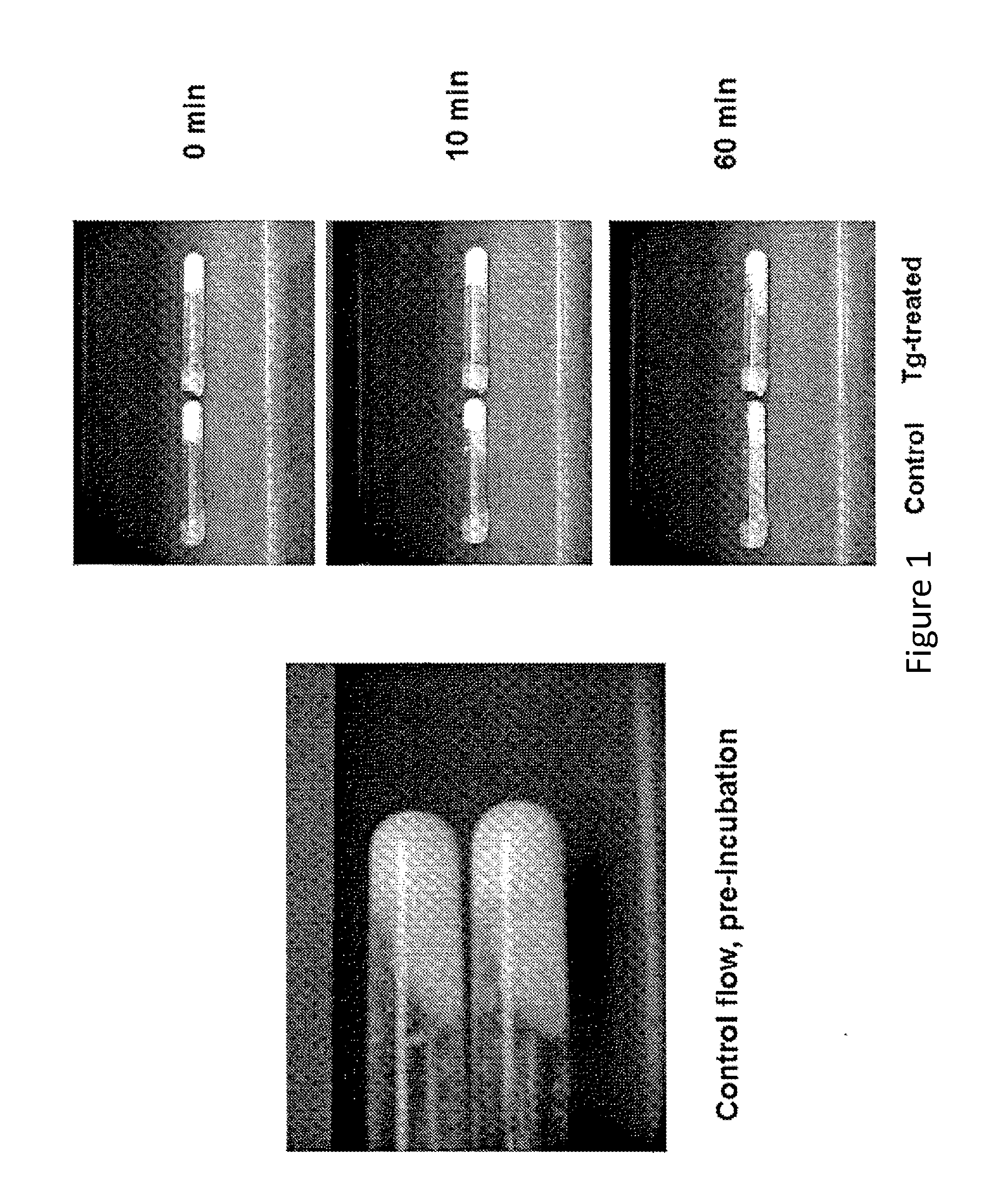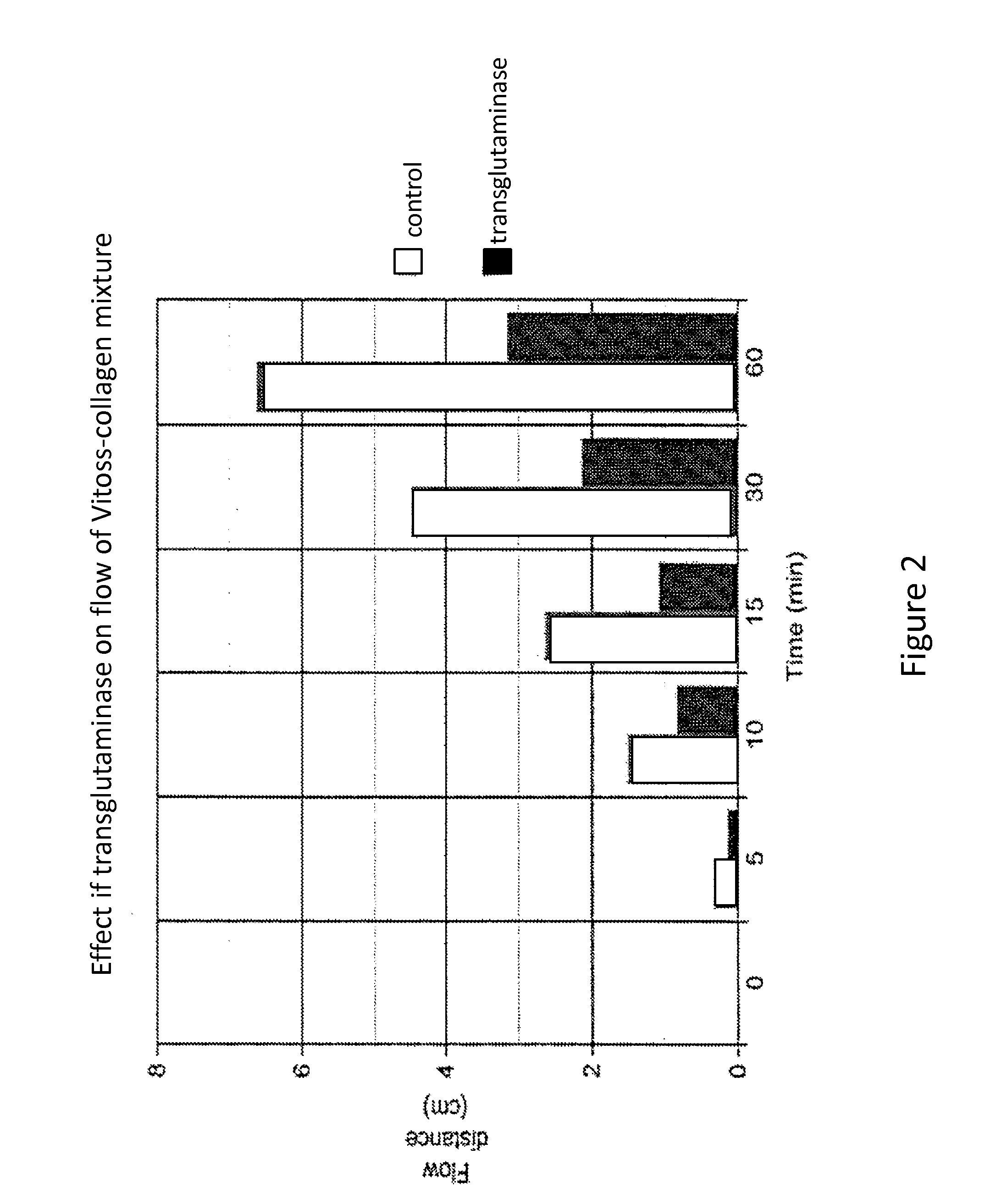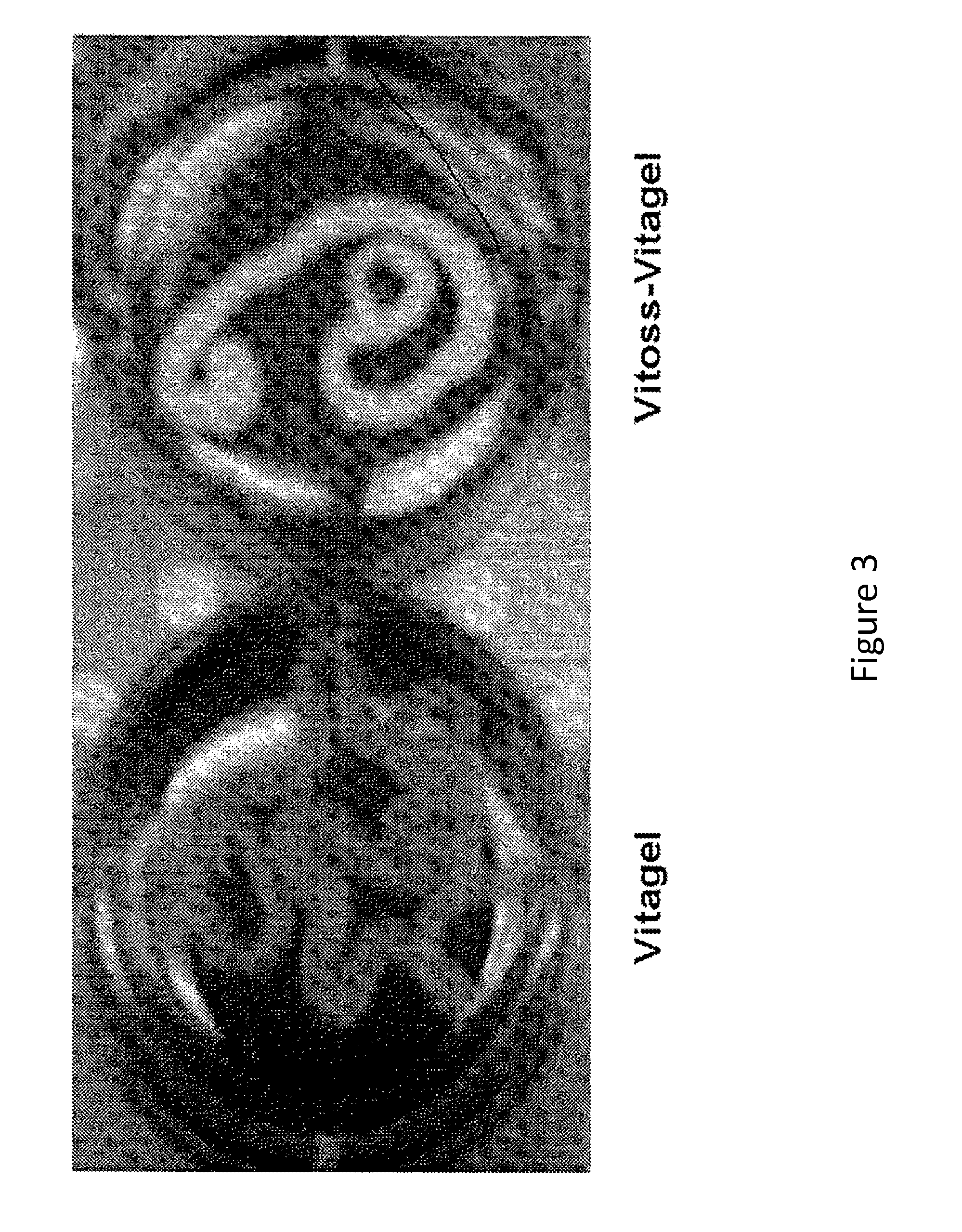Biomaterial Compositions and Methods of Use
a biomaterial and composition technology, applied in the field of biomaterial compositions, can solve the problems of limited supply, pain, morbidity, and risk of second surgery for patients, and achieve the effects of improving the quality of life, and improving the safety of us
- Summary
- Abstract
- Description
- Claims
- Application Information
AI Technical Summary
Problems solved by technology
Method used
Image
Examples
experimental examples
[0077]The invention is further described in detail by reference to the following experimental examples. These examples are provided for purposes of illustration only, and are not intended to be limiting unless otherwise specified. Thus, the invention should in no way be construed as being limited to the following examples, but rather, should be construed to encompass any and all variations which become evident as a result of the teaching provided herein.
experimental example 1
Collagen Biotinylation Feasibility Studies
[0078]In order to evaluate the feasibility of the present invention, collagen was biotinylated using a biotinylation kit in accordance with the manufacturer's instructions.
[0079]It was demonstrated that collagen fibrils could be modified with biotin adducts. Thus, microfibrillar collagen was phosphate precipitated to yield insoluble native-type collagen fibrils. The fibril suspension was diluted to three concentrations and each was subjected to biotinylation using the Thermo Scientific EZ-link NHS-PEG4 kit. The collagen fibril samples were assayed for biotin content using a spectrophotometric assay provided in the biotinylation kit. It was demonstrated that collagen fibrils were biotinylated and that the extent of biotin adduct formation was inversely related to collagen concentration (Table 1).
TABLE 1Biotinylation of type 1 collagen fibril suspensionsBiotin adducts perCollagen fibrils (mg / ml)collagen alpha chain (average)#, *201.42.05.30.23...
experimental example 2
Calcium Phosphate-Collagen Mixtures: Flow and Effect of Transglutaminase
[0082]Experiments were conducted to determine whether small particles of calcium phosphate suspended in microfibrillar collagen solutions exhibit flow and whether crosslinking of the collagen molecules with transglutaminase would affect their flow.
[0083]The materials and methods used in this example are now described.
[0084]Materials
[0085]A mixture of microfibrillar collagen and thrombin was used as a source of microfibrillar collagen. Vitoss® calcium phosphate particles of approximately <1.0 mm (1000 μm) in diameter were used, Microbial transglutaminase (Activa™ RM; Ajinomoto) was purchased from a commercial vendor. Bovine marrow bone segments (˜5 cm long) were obtained from Acme Market, Paoli, Pa.
[0086]Vitoss® Calcium Phosphate Preparation
[0087]Beta-tricalcium phosphate (β-TCP) particles were sieved into fractions enriched in <53, 53-200, 200-500, and 500-1000 μm diameter particles using a series of fine wire s...
PUM
| Property | Measurement | Unit |
|---|---|---|
| Composition | aaaaa | aaaaa |
| Biological properties | aaaaa | aaaaa |
Abstract
Description
Claims
Application Information
 Login to View More
Login to View More - R&D
- Intellectual Property
- Life Sciences
- Materials
- Tech Scout
- Unparalleled Data Quality
- Higher Quality Content
- 60% Fewer Hallucinations
Browse by: Latest US Patents, China's latest patents, Technical Efficacy Thesaurus, Application Domain, Technology Topic, Popular Technical Reports.
© 2025 PatSnap. All rights reserved.Legal|Privacy policy|Modern Slavery Act Transparency Statement|Sitemap|About US| Contact US: help@patsnap.com



